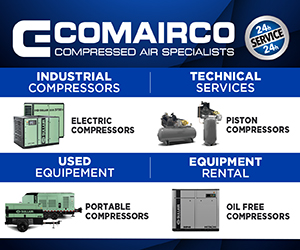By Tabetha Stirrett and Samuel Voegeli
Companies worldwide are searching for ways to reduce their carbon footprint and contribute to a sustainable future. In the potash industry, innovative approaches are emerging to align with global sustainability goals and lead in the future energy landscape.
Sam Voegeli’s recent Potash Producer newsletter article, “Transitioning to the Energy Transition: The Hydrogen Revolution Begins Underground”, highlights the potential of converting unused, depleted potash caverns into hydrogen storage spaces. Storing hydrogen, however, is only one potential option to reduce carbon footprints. Potash producers can expand their operations to further sustainability initiatives, specifically with clean ammonia production and carbon capture, utilization, and storage (CCUS) infrastructure.
Clean ammonia production
Integrating clean ammonia production into potash operations allows companies to diversify products and meet rising demands for sustainable fertilizers. Because potash solution mining facilities have the potential to store large amounts of hydrogen (the key feedstock for ammonia) in the subsurface, a unique synergy exists between potash and ammonia production. Using potash solution mines as resources for clean ammonia production and storage maximizes the value of these assets and enhances overall operational efficiency.
Shifting toward clean ammonia production reduces traditional carbon-intensive production methods. Clean ammonia can be produced by combining renewable energy with electrolysis or splitting methane (CH4) and capturing the resulting carbon, which is then injected underground, ensuring a carbon-neutral or low-carbon ammonia production process. Embracing this approach not only meets the rising demand for clean fertilizers but also mitigates environmental impact, attracts responsible investment, and secures a sustainable future by lowering carbon footprints.
Carbon injection sites
After clean ammonia is produced, carbon dioxide injection into suitable reservoirs near potash facilities can help companies meet carbon reduction goals by offering alternative infrastructure for CCUS, especially as more industries compete for pore space utilization. With carbon credits, carbon taxes, and government incentives on the rise, injecting carbon dioxide into nearby reservoirs for CCUS can be an excellent financial decision that will pay off in the future. It’s a win-win-win situation where economic growth aligns with a lower carbon footprint that meets sustainability goals.
But getting there requires efficient expertise. RESPEC’s experts focus on maximizing the efficiency of hydrogen and carbon storage and minimizing the release of greenhouse gases to reduce the operation’s carbon footprint. With potash and underground storage backgrounds, we are well-equipped to guide companies through this change. We can model carbon dioxide plume development and brine injection rates, execute drilling, and complete all testing required to identify suitable disposal formations and designs. RESPEC can assist in understanding the impact that competing industries might face with the complex requirement for pore space for waste brine disposal and CCUS.
Preparing for sustainable initiatives better positions potash companies as leaders in the future energy landscape, actively reducing carbon emissions and accomplishing key environmental, social, and governance targets. With RESPEC’s support and expertise, companies can feel confident in meeting global sustainability goals.








